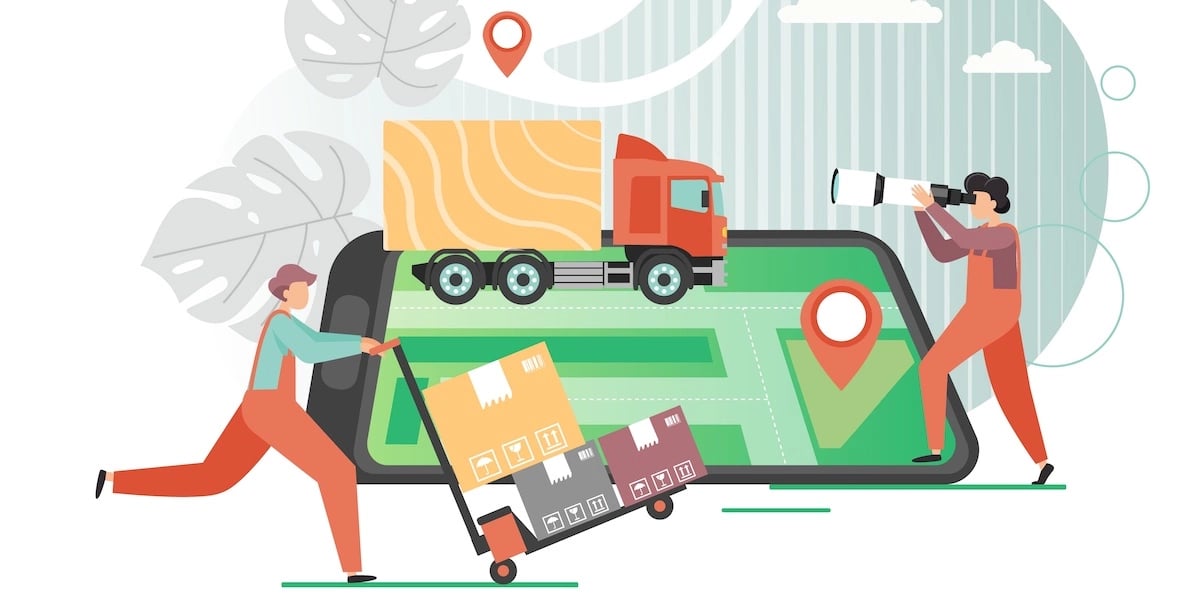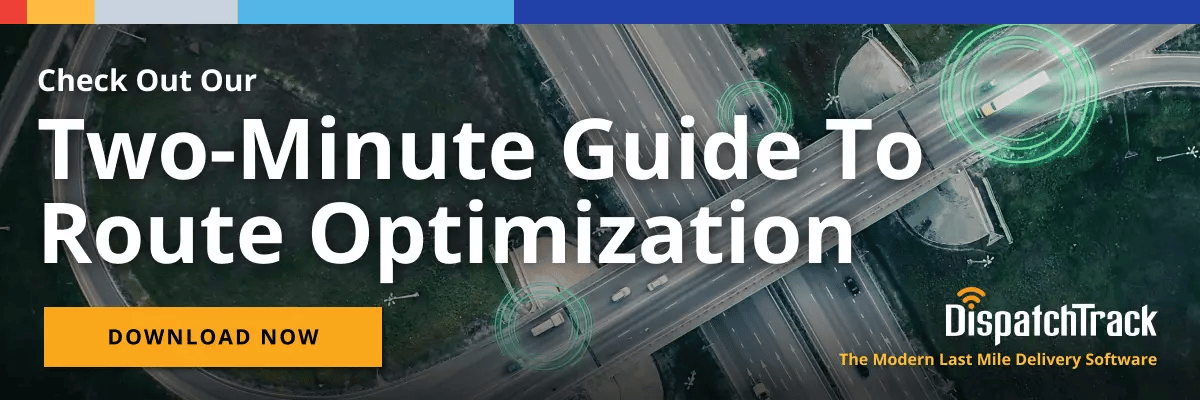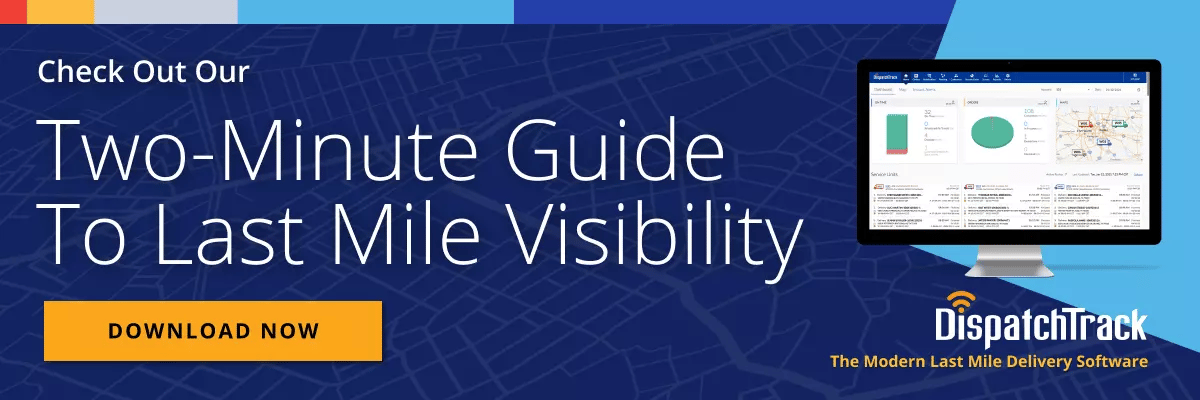Trucking software empowers fleet managers to manage operations more efficiently and cost-effectively. It helps provide real-time visibility into fleet operations, decreases fuel usage, and lowers truck maintenance costs. Simply put, trucking software can be a powerful tool that enables companies to meet their business goals.
 In today's competitive marketplace, it’s not enough to adopt the newest and shiniest tools and technologies—you need to make sure your technology is actually working for you. Fortunately, the right trucking solution can collect mission critical data to enable managers to monitor specific metrics to determine the return-on-investment (ROI) of the solution. In this post, we will tackle the basics of trucking software and how businesses can measure the ROI of their last mile solutions.
In today's competitive marketplace, it’s not enough to adopt the newest and shiniest tools and technologies—you need to make sure your technology is actually working for you. Fortunately, the right trucking solution can collect mission critical data to enable managers to monitor specific metrics to determine the return-on-investment (ROI) of the solution. In this post, we will tackle the basics of trucking software and how businesses can measure the ROI of their last mile solutions.
The Basics of Trucking Software
On some level, all businesses that utilize commercial vehicles have to deal with fleet operations and maintenance. You may have fleet managers who are responsible for overseeing fuel consumption, vehicle maintenance, driver management, fuel costs, optimized route planning, and asset utilization. Without the right tools (e.g. a last mile solution), fleet managers stand to run into numerous difficulties managing their fleets efficiently and keeping costs low.
This might sound daunting. Luckily, last mile solutions and trucking software enable managers to understand various elements affecting the fleet's overall operating expenses and how to best reduce them. To wit, the right logistics software for trucking can provide insights on drivers' behavior, ensure compliance to state and national regulations and laws, and improve driver safety. How? We’re glad you asked:
Real-time tracking
Real-time tracking of drivers and orders enables fleet managers to identify delivery exceptions and manage them effectively in real-time. Monitoring drivers' behavior on the road also helps in cutting down fuel costs, unproductive hours, and unnecessary vehicle maintenance expenses.
Fuel consumption and taxes
The right software also offers fuel consumption analysis to simplify the process of paying state-level fuel taxes. This is on top of decreasing overall fuel consumption by shortening distances between stops by way of route optimization.

Measuring ROI
Trucking software brings many benefits to fleets, including increased driver productivity, improved customer service, and optimized routes, among others. Given the highly competitive last mile delivery marketplace, it's important for businesses to measure the effectiveness or success of the implementation of the software. Keeping track of the right metrics enables fleet operators and managers to determine whether they’re actually achieving their desired ROI for their last mile solutions.
KPIs will differ from one company to another, and might be influenced by the fleet's size, but broadly speaking, there are a handful of areas where it’s possible to identify cost savings. To measure your ROI, you might keep an eye on these KPIs.
Labor savings through automation
If your trucking software truly offers end-to-end functionality, it should give you the ability to cut out manual effort (and thus costs) by way of automation at a host of different touchpoints. For instance, if you’re able to automatically update your customers with delivery updates before, during, and after the delivery, you can radically cut down on the expenses associated with making phone calls. By the same token, you can reduce the number of hours it takes to generate an optimal route, potentially saving significant person hours.
Fuel consumption
Again, optimized routes consume less fuel. Plus, tracking and calculating fuel consumption and costs in real-time can help fleets increase fuel savings through data-driven decisions. In this way, tracking fuel consumption and calculating costs let fleets have deep insights into the company's fuel economy. A last mile solution allows managers to look at historical data on fuel consumption and help determine usage patterns that result in fuel wastage.
Asset utilization
Monitoring the use of the assets will not only lengthen their lifespan but also ensure that companies get the most out of their investments in vehicles. It's essential to track the average distance traveled or hours of use daily to maintain a sustainable fleet size.
Tracking asset utilization prevents fleets from purchasing delivery vehicles unnecessarily. Many times, companies buy additional vehicles to meet high delivery orders instead of checking whether they are maximizing the use of current fleets. Monitoring asset utilization allows operators and managers to make data-driven decisions on vehicle acquisition. Again, this is an area where automated, AI-powered route optimization is a crucial feature of your trucking software—when it seems like you should be able to deliver more with your existing capacity, inefficient routes are one of the most common culprits.
Productivity
There are different expenses incurred in fleet operations. Unfortunately, keeping tabs on all fleet-related expenses is a cumbersome task. But the right to maximize the fleet's productivity by cutting down failed deliveries, reducing manual effort, and more. Simply, you should be able to measurably boost the number of stops you complete successfully each day.
A trucking solution along with telematics integration offers operators and managers specific data to establish the right productivity success metrics, which can then be used in measuring the trucking software's ROI for the company.
Productivity can also be measured in a more holistic sense by tracking the number of driving hours, the utility of trucks, and driver performance against stops per day. Likewise, productivity can be measured in the back office as well. Once you’ve established the metrics that speak to the parts of your business you’re trying to target, you can begin to dig in to how those metrics are changing over time. Businesses can also track distance traveled, driver behavior, loading and unloading times, turn around time, and customer satisfaction to ensure that they are reaping the benefits of having a truck delivery solution.
In the end, it's not always enough to invest in trucking software. You also need to track your fleet's performance to ensure that you’re getting the benefits you hoped to enjoy when you implemented the software. To that end, the best way to measure the ROI of your trucking solution is to identify and monitor KPIs on fuel consumption, asset utilization, productivity, and labor savings.
